Long ago, in the days when seafaring charts still contained many gaps and long ocean voyages were fraught with danger, unexplored and mysterious far-away lands were sometimes labelled with an ominous warning: ‘here be dragons’. Many might believe that dragons belong to the realm of fantasy and imagination, but on a handful of Indonesian islands, real dragons exist. Komodo and Rinca, as well as isolated parts of Flores and two other tiny uninhabited islands, are home to small populations of fearsome beasts known as Komodo dragons, the world’s largest living lizard.
Relentless predators
It is unusual for big predators to be restricted to such small islands, but these huge reptiles are found nowhere else on Earth. They are similar in appearance to the giant monitor lizards found all over Southeast Asia, but these are much larger, more powerful and more dangerous animals. Adult males commonly reach three metres in length and weigh 70kg; some specimens can tip the scales at over 100kg, and dragons of up to 150kg have been recorded.

Komodo dragons were ‘discovered’ by science in 1910, and for many years, it was thought that the bacteria in their saliva caused their prey’s wounds to fester, slowly killing any animal unfortunate enough to be bitten. It is now known that, as well as bacteria, the dragons’ saliva also contains a kind of poison. They prey on animals as large as buffaloes and, after sinking their teeth into their victim just once, they patiently and relentlessly pursue the animal for up to two weeks as it slowly dies from a combination of the unhealed wound, blood loss, exhaustion and shock from the viciousness of the bite. It is not unknown for dragons to attack humans, sometimes with devastating results.
For me, the lure of these remote and exotic islands, coupled with the hint of danger associated with these magnificent but deadly reptiles, was too much to resist.
Komodo National Park
Komodo and Rinca are located in the Komodo National Park in the chain of islands to the east of Java known as the Lesser Sunda Islands. The waters of the national park are also home to a bewildering variety of marine life and are renowned as one of the world’s top diving destinations. Trips into the park can be organised from as far away as Bali or Lombok, but the usual jumping off point is Labuanbajo, a scruffy but endearing port town at the westernmost end of elongated Flores. The town’s main tourist strip is a single road that winds its way along the seafront, consisting almost exclusively of bars, restaurants, dive shops and tour agencies, and this is the place to arrange excursions to see the dragons.
It is possible to charter a boat to travel to Komodo or Rinca, although, for obvious reasons, it is completely forbidden – and highly inadvisable – to go onto the islands without an official guide. However, the most popular option is to take a two-day tour, which includes snorkelling and swimming at various spots in the national park, a night on a boat, and then a trip to the two islands the following day.
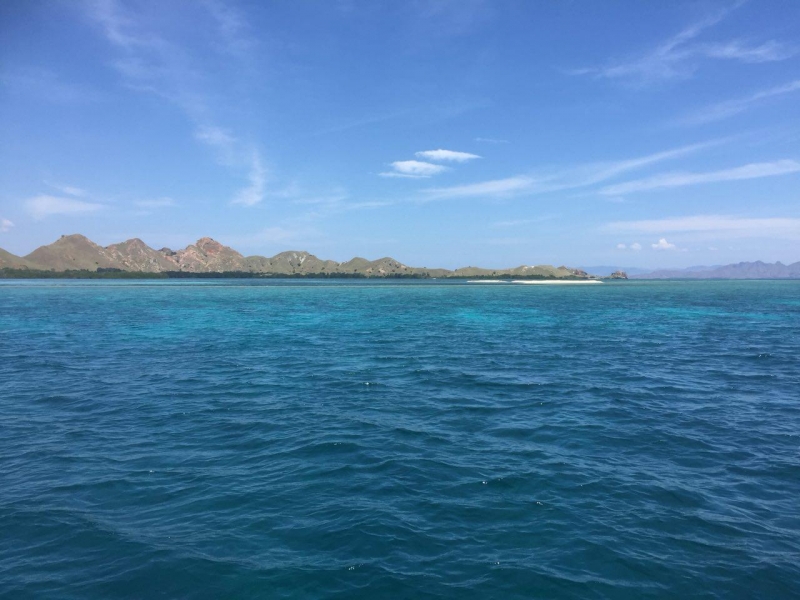
My boat departed early in the morning. After leaving the busy port behind, a sea of improbable shades of aquamarine and turquoise, punctuated by tiny uninhabited islands and spits of pure white sand, began to reveal itself. This is a place where some of the world’s strongest ocean currents flow, and sometimes, even from the boat, it is possible to see the power of the tides churning the surface menacingly like a river gushing through a narrow channel. In other places, the sea is relatively calm, and it is common to see turtles swimming lazily below before disappearing suddenly with surprising speed as they are startled by the engines of the boat.
The captain first steered us towards Manta Point, a famous diving and snorkelling spot. Year-round, giant manta rays are drawn to this cleaning station for the service provided by specialist fish that remove parasites from their bodies and mouths. At the right time of year, it is possible to swim there surrounded by scores of these graceful giants as they glide effortlessly with each slow flap of their three-metre wings; even out of season, the chances of seeing mantas are good.
Boats also usually call at Pantai Merah, ‘Red Beach’ in Indonesian, a small strip of sand which, at the right time of day, appears to take on a striking hue of pink. Most boats pause here for an hour or so to let their passengers swim to the shore or enjoy some more snorkelling above the corals. Later, during another stop, I swam the short distance to the beach of an uninhabited island on which I was the only human present.
These activities, however, were only the prelude to the main adventure. Early on the second morning, our boat made its way to the islands of Rinca and Komodo to finally go in search of the infamous dragons.
Here be dragons
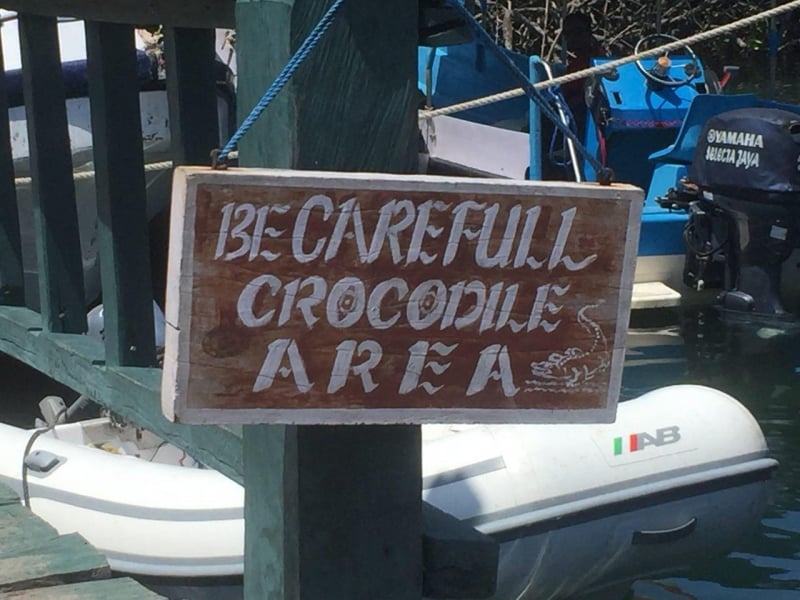
Arriving at the jetty on Rinca, visitors are met by a sign advising them to beware of crocodiles. These waters are within the natural range of saltwater crocodiles, the world’s largest and most dangerous species, and on seeing the sign, I thought back uneasily to my solo swim to the beach the previous afternoon.
After the necessary administration in the visitor centre, rangers escort small groups inland to look for dragons. Our guide explained that baby dragons spend a lot of time in the trees to avoid becoming meals for larger individuals. Komodo dragons are cannibals, and a mother dragon would think nothing of eating her own babies if she managed to catch them once they hatched. Baby dragons also have a tendency to jump out of the trees onto unsuspecting visitors below, and our anxiety grew as we made our way further inland, now keeping a watchful eye on the branches overhead as well as scouring the scrub below for the more dangerous adults.
Each ranger carries a wooden stick with a ‘V’-shaped end, ostensibly for fending off dragons that come too close. In the event of a charge by a 100kg Komodo dragon, however, I wondered how useful this flimsy staff would really be. I asked the guide if he had ever needed to use it. He told me he had, several times.
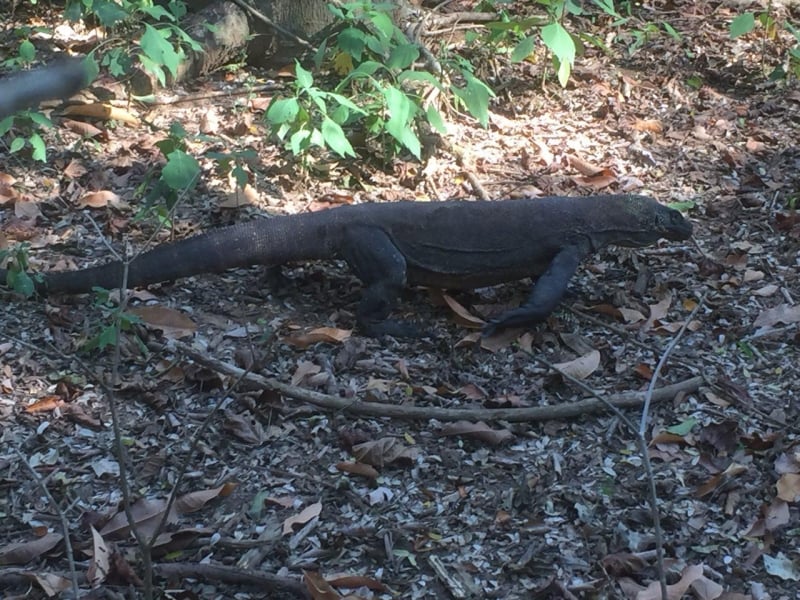
Not far from the visitor centre, we caught sight of our first dragon, a juvenile about the size of a large monitor lizard, that was picking its way through the undergrowth. At a glance, it could have been mistaken for a monitor, but even juvenile dragons are more heavily-built than their close cousins, and unlike monitors, this reptile was completely unconcerned by our presence.
Primeval landscape
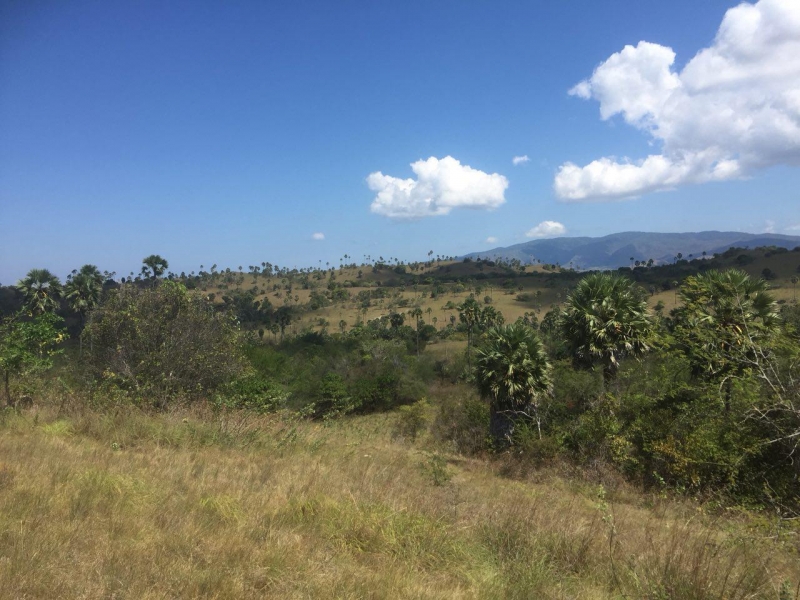
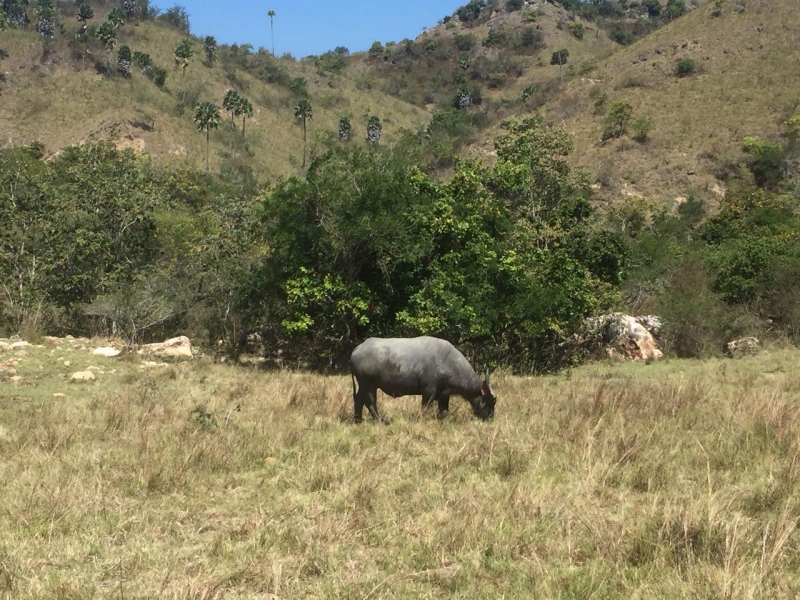
The landscape of Komodo and Rinca is rugged and primeval, with Rinca being the drier of the two, and it would be hard to imagine a more suitable habitat for a creature that seems to belong in a bygone era. Against such a backdrop, while hoping to spot dragons, one almost expects to come face to face with long-extinct prehistoric animals that roamed the Earth millions of years ago.
As with any wild animals, sightings are never guaranteed, and our group was unlucky. We visited both islands but only saw one other lethargic dragon half asleep in the shade of a tree. It was not quite the sighting of a full-grown active adult I had been hoping for, but it was better than nothing, and now it was time to head back to the boat. Yet there was still one more encounter to come.
A putrid feast
For several days before my trip, travellers returning to Labuanbajo had been bringing back rumours that somewhere on one of the islands, some dragons had made a kill. As we made our way back to the headquarters, the guide suddenly branched off from the trail and began to follow the course of a dried-up river.
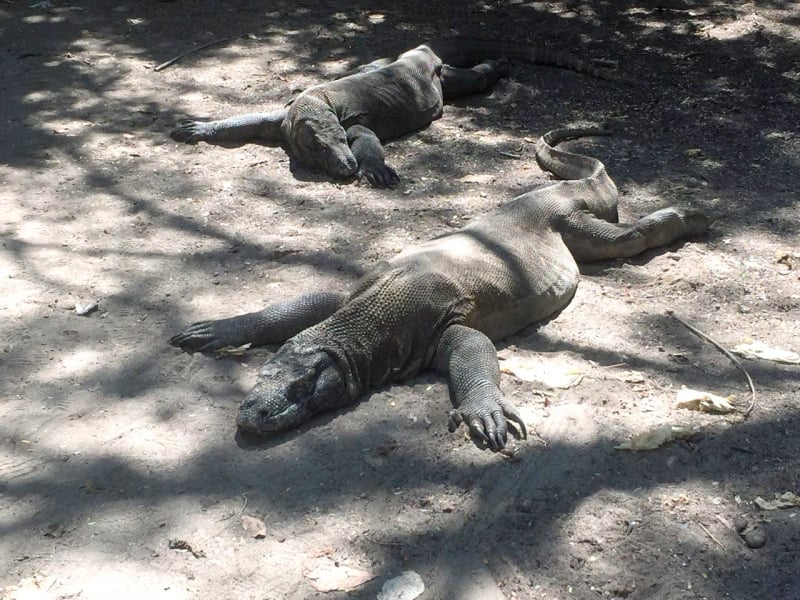
It was the smell we noticed first, long before seeing them. As we picked our way along the boulder-strewn river bed, the foul odour of rotting flesh grew steadily stronger and more oppressive before finally, there they were: two adult dragons gorging themselves on the putrid, week-old carcass of a buffalo. In the background, a juvenile watched warily, waiting its turn, keen to avoid joining the buffalo on the menu.
For around ten minutes we looked on while the dragons worked on the buffalo. There might be fewer than 2,000 dragons on each of the two main islands, but this is how they survive. They inflict a gruesome, drawn-out death on anything they bite, and once they make a kill, nothing is wasted. We continued to watch them wallowing in the slime and stench of the long-dead buffalo as they tore the very last shreds of fetid meat from the bones of their unfortunate victim. And then, it was time to go.
Paradise, above and beneath the waves
Since my trip to Komodo and Rinca, I have been surprised to realise how many people are unaware of the existence of these dragons. Many captive specimens exist in zoos around the world, but for me, it was important to make the trip to their islands of origin. I wanted to experience the thrill of personally stepping foot into this remote land of dragons, somewhere that just happens to be one of the most beautiful places on the planet, both above and beneath the waves.





